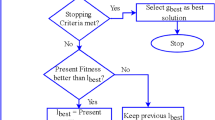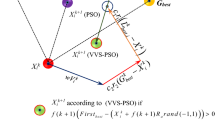Abstract
The non-destructive determination of internal forces in bars for existing building structures is a forward-looking challenge for the construction industry. The application of validated techniques would not only allow the detection of overloads or structural changes according to the load-bearing behavior, it would also allow the verification of the original structural analysis. Based on an experimental modal analysis, tried and tested methods to determine the tensile forces of cables in the operating condition have existed for many years. Due to the slenderness of the cables, even normal forces have a large influence on their natural frequencies: The higher the tensile forces, the higher the geometrical system stiffness, which increases natural frequencies. An equivalent effect occurs when considering load-bearing elements subjected to compression, whereby larger compressive forces lead to a reduction in the geometrical system stiffness and thereby to a reduction in natural frequencies. While various methods have been experimentally investigated for tension cables and tension rods, only a few elaborations are known with respect to structural compression rods. This research presents a system identification method based on the experimental determination of the modal parameters of a compression steel bar. Using an iterative optimization procedure, the design parameters of a basic model including the compressive force are iteratively adjusted until the best possible agreement between the experimental measurements and a theoretical analysis is found. For this purpose, a deviation function is formulated and an evolutional algorithm — in this case facilitating a Particle Swarm Optimization — is used to solve the optimization problem. The Particle Swarm Optimization is an innovative metaheuristic algorithm that allows searching for the global minimum even for complicated nonlinear functions. The method is experimentally validated on slender steel beams with varying compressive forces. Laboratory results from three different steel profiles combined with two different bearing conditions each are presented. Therefore, six specimens were constructed and tested with four different force levels each. The average deviation over all 24 tests between the optimized force and the actual force directly measured by a load cell was determined as 7.4%.
Access this chapter
Tax calculation will be finalised at checkout
Purchases are for personal use only
Similar content being viewed by others
References
Doktor, M.S., Fox, C., Kurz, W., Stockis, J.-P.: Characterization of steel buildings by means of non-destructive testing methods. J. Math. Ind. 8(10), 1–17 (2018)
Kuttner, T.: Praxiswissen Schwingungsmesstechnik, 1st edn. Springer Vieweg, Wiesbaden (2015)
Li, H., Ou, J., Zhou, Z.: Applications of optical fibre Bragg gratings sensing technology-based smart stay cables. Opt. Lasers Eng. 47(10), 1077–1084 (2009)
Lin, Y.B., Pan, C.L., Kuo, Y.H., Chang, K.C., Chern, J.C.: Online monitoring of highway bridge construction using fiber Bragg grating sensors. Smart Mater. Struct. 14(5), 1075–1082 (2005)
Fox, C., Doktor, M., Schneider, E., Kurz, W.: Bewertung von Stahlbauwerken durch zerstörungsfreie Bestimmung von Spannungszuständen. Stahlbau. 85(1), 1–15 (2016)
Geier, R., Petz, J.: Kraftbestimmung in Schrägseilen durch dynamische Messung. Beton- Und Stahlbetonbau. 99(12), 985–991 (2004)
Kangas, S., Helmicki, A., Hunt, V., Sexton, R., Swanson, J.: Identification of cable forces on cable-stayed bridges: a novel application of the MUSIC algorithm. Exp. Mech. 50(7), 957–968 (2010)
Stadler, M., Penka, E., Zilch, K.: Ermittlung der freien Schwingungslänge zur Bestimmung der Vorspannkraft externer Bandspannglieder durch dynamische Messungen. Bauingenieur. 82(1), 25–29 (2007)
Geier, R.: Brückendynamik: Schwingungsuntersuchungen von Schrägseilen. Books on Demand GmbH, Norderstedt (2004)
Kernicky, T., Whelan, M., Al-Shaer, E.: Dynamic identification of axial force and boundary restraints in tie rods and cables with uncertainty quantification using set inversion via interval analysis. J. Sound Vib. 423, 401–420 (2018)
Lagomarsino, S., Calderini, C.: The dynamical identification of the tensile force in ancient tie-rods. Eng. Struct. 27(6), 846–856 (2005)
Tullini, N., Laudiero, F.: Dynamic identification of beam axial loads using one flexural mode shape. J. Sound Vib. 318, 131–147 (2008)
Ding, B., Liu, J., Huang, Z., Li, X., Wu, X., Cai, L.: Axial force identification of space grid structural members using particle swarm optimization method. J. Build. Eng. 32, 1–11 (2020)
Bayón, A., Gascón, F., Medina, R., Nieves, F.J., Salazar, F.J.: On the flexural vibration of cylinders under axial loads: numerical and experimental study. J. Sound Vib. 331(10), 2315–2333 (2012)
Petersen, C., Werkle, H.: Dynamik der Baukonstruktionen, 2nd edn. Springer Vieweg, Wiesbaden (2017)
Lein, C., Beitelschmidt, M.: Comparative study of model correlation methods with application to model order reduction. In: Sas, P. (ed.) Proceedings of ISMA 2014 International Conference on Noise and Vibration Engineering, USD 2014 International Conference on Uncertainty in Structural Dynamics, 2683–2700. KU Leuven Dep. Werktuigkunde, Heverlee (2014)
Darwin, C.: On the Origin of Species by Means of Natural Selection, or the Preservation of Favoured Races in the Struggle for Life. John Murray, London (1859)
Eberhart, R., Kennedy, J.: A New Optimizer Using Particle Swarm Theory. Institute of Electrical and Electronics Engineers, Piscataway (1995)
Zhao, Q., Li, C.: Two-stage multi-swarm particle swarm optimizer for unconstrained and constrained global optimization. IEEE Access. 8, 124905–124927 (2020)
Waltering, M., Schnell, J., Weisleder, F., Pancic, A.: Tragfähigkeitsanalyse im Bestand mittels Schwingungsanalyse. Forschungsinitiative ZukunftBau, Fraunhofer IRB Verlag (2019)
Author information
Authors and Affiliations
Corresponding author
Editor information
Editors and Affiliations
Appendix
Appendix
In the following chapter, the results from test B3-C-T4 are illustrated in more detail. Figure 9.6 demonstrates the Frequency Response Function (FRF) from the acceleration sensors ACC-2 to ACC-13. A frequency range from 20 to 180 Hz is presented in the figure, while the full measurement contained a baseband to 200 Hz. The impact point was located at ACC-8 so that two modes could be determined sufficiently accurate. Figure 9.7 shows a more detailed view of the FRF between 25 Hz and 36 Hz demonstrating the first natural frequency at 30.26 Hz. Numerical results from the modal properties are provided in Table 9.5.
According to the modal parameters shown in Table 9.5, the system identification method was proceeded. A system length of 2.3975 m was chosen for the distance between ACC-2 and ACC-13. Figure 9.8 demonstrates the measured and optimized mode shape including the corresponding natural frequencies. The continuous line is the optimized mode shape; the markers illustrate the measured mode shape.
Figure 9.9 illustrates the optimized column based on the mode shape and frequency shown in Fig. 9.8. The presented beam contains the optimized and the assumed parameters from the system identification method. The optimized compressive force N had a deviation of 1.89 kN compared to the actual force. The percentage error was calculated to 2.7% for this specific test.
Rights and permissions
Copyright information
© 2023 The Author(s), under exclusive license to Springer Nature Switzerland AG
About this paper
Cite this paper
Dudenhausen, S., Waltering, M., Kurz, W. (2023). The Application of a Force Identification Method Based on Particle Swarm Optimization to Compression Steel Bars. In: Allen, M., Davaria, S., Davis, R.B. (eds) Special Topics in Structural Dynamics & Experimental Techniques, Volume 5. Conference Proceedings of the Society for Experimental Mechanics Series. Springer, Cham. https://doi.org/10.1007/978-3-031-05405-1_9
Download citation
DOI: https://doi.org/10.1007/978-3-031-05405-1_9
Published:
Publisher Name: Springer, Cham
Print ISBN: 978-3-031-05404-4
Online ISBN: 978-3-031-05405-1
eBook Packages: EngineeringEngineering (R0)








